Hanfu Hair Accessories
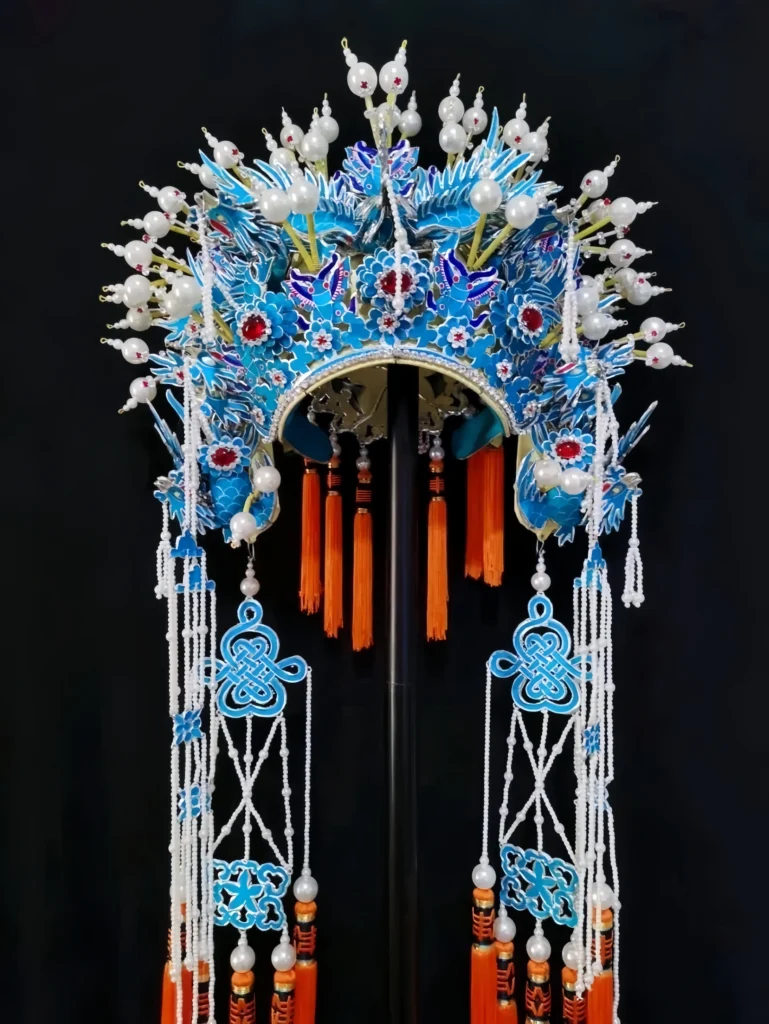
Hanfu hair accessories are the crowning glory of traditional Chinese attire, transforming Hanfu outfits into breathtaking displays of culture and elegance. From intricate fazan hairpins to swaying buyao ornaments, these Chinese accessories for hair carry centuries of history and craftsmanship. Whether you’re styling a Tang-inspired ruqun or a Ming mamian qun, mastering Hanfu hair styling with these traditional Chinese accessories elevates your look. In this guide, we explore five iconic styles—fazan, buyao, zhuhua, fachai, and mo’e—their cultural significance, and how to wear these Chinese traditional accessories. Let’s dive into the dazzling world of Chinese hairpins and ornaments!
Hanfu and Its Dazzling Accessories
Hanfu, the traditional clothing of the Han Chinese, isn’t just about stunning garments—it’s a whole vibe with tons of gorgeous Hanfu accessories to match! Today, let’s dive into the world of Hanfu hair accessories and uncover their rich cultural story.
Origins of Chinese Hair Accessories
The roots of Chinese Hair Accessories stretch back to the late Paleolithic era. Early humans first messed with their Hanfu hair because loose, face-covering locks got in the way of work and survival. For practical reasons, they started taming their wild hair, tying it up with simple Chinese hairpins. Over time, this sparked a fuzzy, unconscious sense of style and beauty. As ages passed, our ancestors’ budding aesthetic sense pushed them to jazz up their hair with all sorts of traditional Chinese accessories, transforming Chinese accessories for hair into dazzling Hanfu hair accessories.
Early Materials of Hair Accessories
Archaeological finds reveal a treasure trove of early hair accessories, mainly crafted from three materials:
- Animal Pelts: These symbolized raw, natural vibes, used to shield the head and mimic animals for better hunting.
- Bamboo and Wood: Think ji (hairpin precursor), shaped like a hand for easy hair-taming.
- Stone and Bone: Carved into beads or decorative trinkets for a touch of flair.
These materials laid the groundwork for the stunning hairpieces we adore today.
Types of Traditional Hair Accessories
As lifestyles evolved, hair accessories (faxian) got more specific and diverse. Here’s the lineup of classic Chinese hair accessories:
- Fazan (hairpin)
- Fachai (hair fork)
- Buyao (step-shake ornament)
- Fadian (jeweled hairpin)
- Shubi (comb and grate)
- Bianfang (flat hairpin)
- Faguan (hair crown)
- Zhuhua (pearl flower)
- Mo’e (forehead band)
- Huasheng (floral hair ornament)
- Juanhua (silk flower)
- Zhouji (hairnet crown)
Hairpin (Fazan)
The fazan (hairpin) was the go-to tool for ancient women to secure their updos, coming in all shapes and materials—from simple bamboo to dazzling gold and jewels. Each one showcases the clever craftsmanship of ancient artisans.
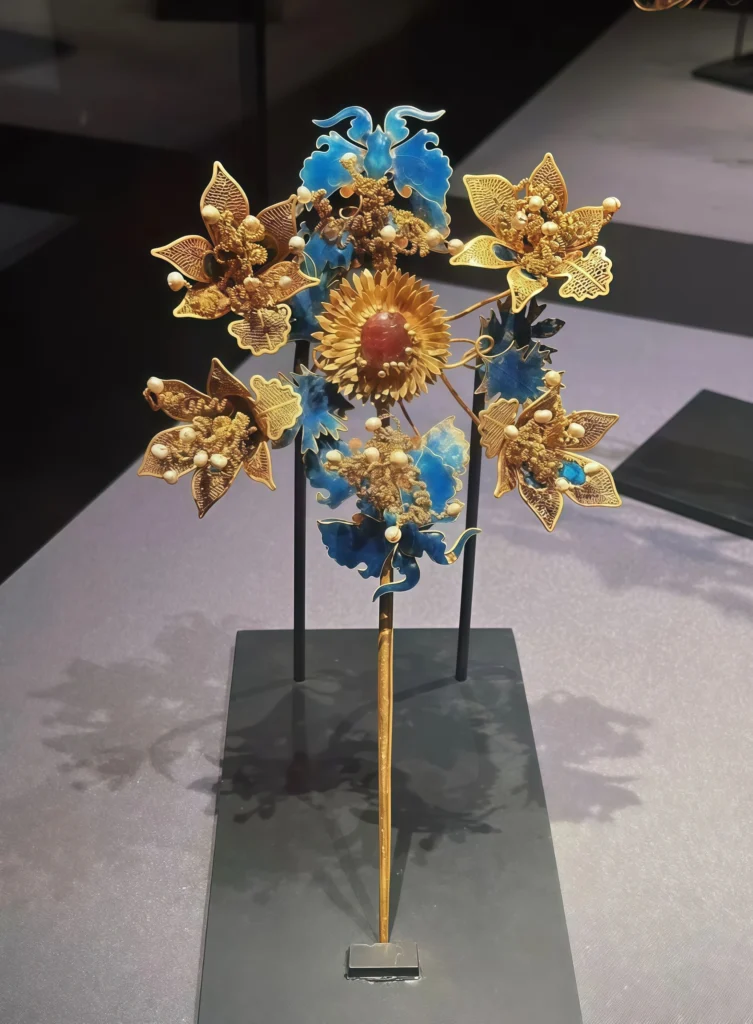
Materials and Craftsmanship: Fazan (hairpins) are made from gold, silver, jade, pearls, and gemstones. Gold and silver pins scream elegance, often carved with intricate patterns or studded with sparkling gems to flaunt the wearer’s high status. Jade pins, with their smooth texture and fresh hues, are a favorite for their understated charm. Crafting a fazan involves picking materials, designing, carving, and inlaying—every step polished to perfection for a stunning final piece.
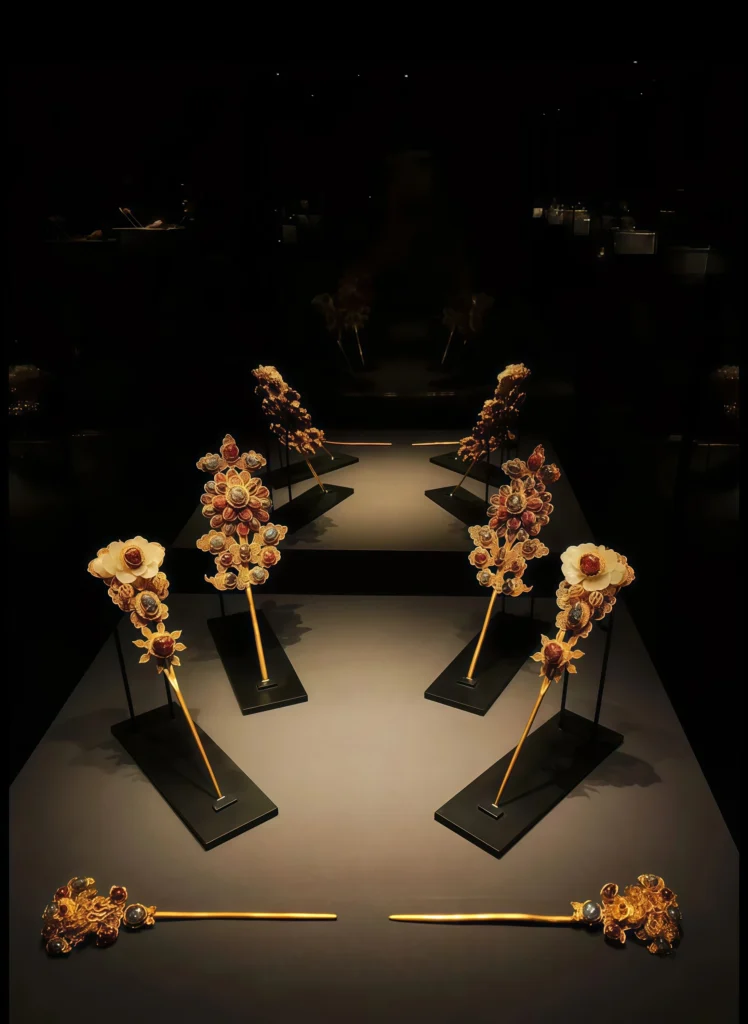
Cultural Meaning: In ancient China, fazan (hairpins) carried deep symbolism. At a girl’s coming-of-age jili (hairpin ceremony), a fazan was inserted to mark adulthood, just as men received hairpins at their “weak crown” (20th year). Different materials held wishes: jade for purity, gold for wealth and status.
Hair Fork (Fachai)
The fachai (hair fork) is a two-pronged accessory formed by crossing two pins, born in the Sui dynasty to decorate and secure updos. Popped into buns after styling, fachai can pin hats or add flair. They range from buyao (step-shake)-like designs to modern hair-clip vibes. Super decorative, they shine in complex updos, often used in multiples for a gorgeous effect.
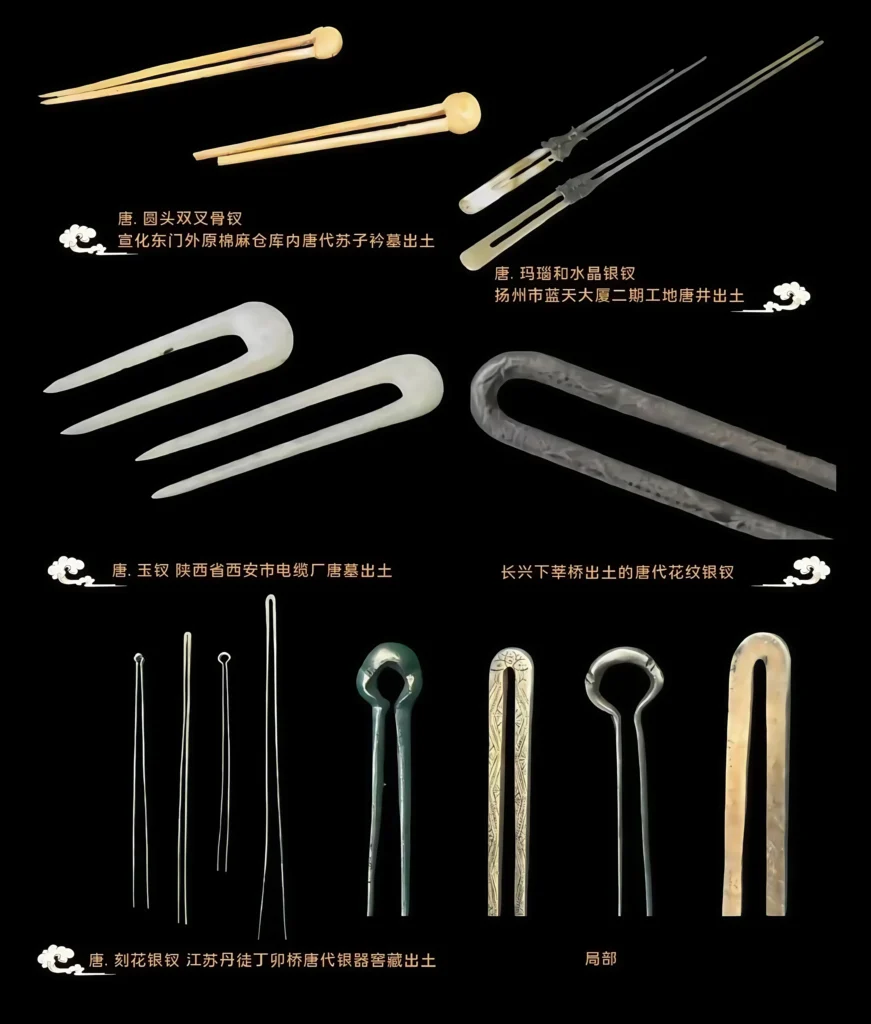
Fachai come in gold, jade, and treasures, with tortoiseshell being a fave for its lucky vibes. Beyond fixing hair, they signaled status and style.

Step-Shake (Buyao)
The buyao (step-shake) is a Han Chinese women’s ornament that sways with every step—hence the name! Crafted from gold bent into dragons, phoenixes, or other shapes, they’re adorned with pearls and jade. From the Six Dynasties onward, designs got fancier, mixing birds, beasts, or flowers, glowing with fachai and dianzi. Materials include gold, silver, jade, and agate.
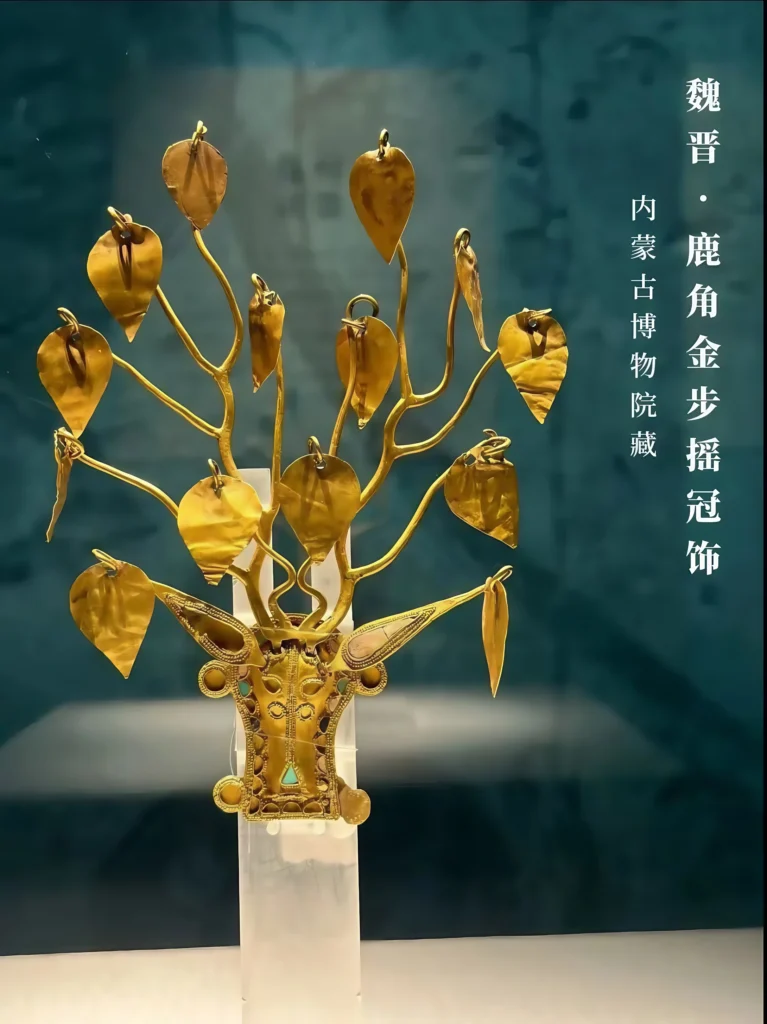
A staple since the Pre-Qin era, buyao evolved through the Han, Wei, and Southern-Northern Dynasties, hitting peak popularity in the Tang dynasty—perfect for your Tang-inspired red ruqun vibe!

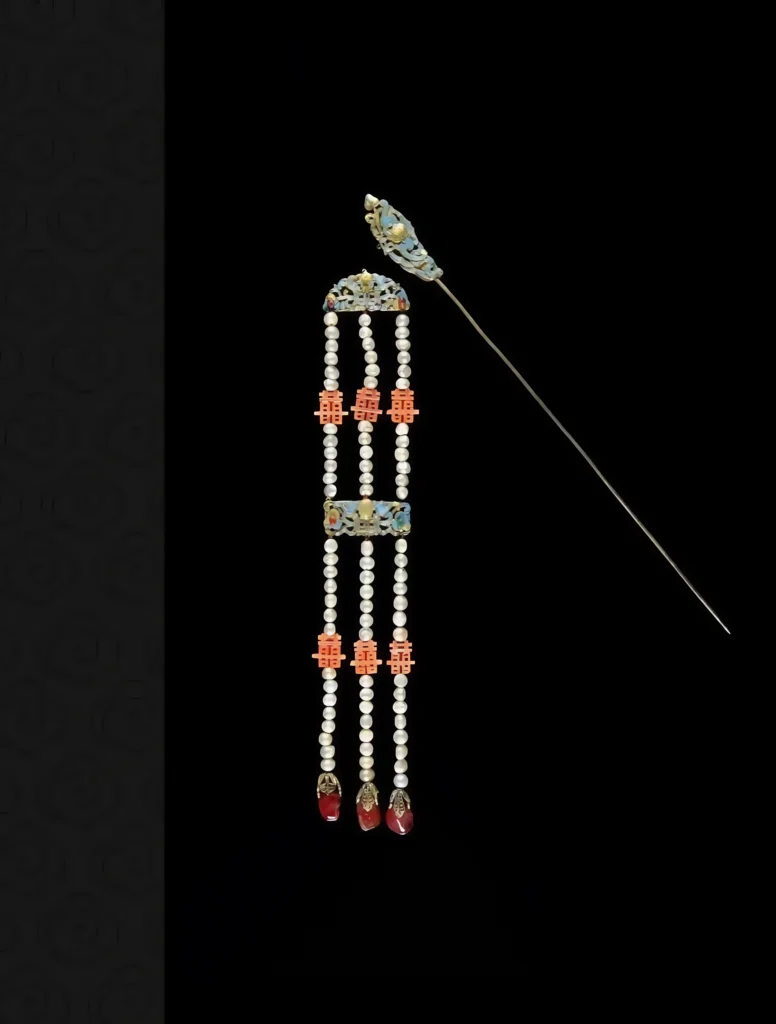
Dianzi (Dianzi)
Intro: The dianzi (jeweled hairpin) is a women’s accessory studded with gold flowers, pointillist inlays, gemstones, and precious pearls. It comes in two types: practical dianzi for securing hair (plain, no bling) and decorative dianzi with jeweled flowers for show, reflecting status.

Types: Dianzi splits into full dianzi (fully adorned) and half dianzi (partially adorned). Made with black velvet or satin bases, they use silver or copper wires, decorated with pointillist work or pearls. Common women used copper or iron “hair supports,” shaped like phoenix crowns in front and wide baskets in back. Hair was split, wrapped around, and pinned with fazan or flowers.
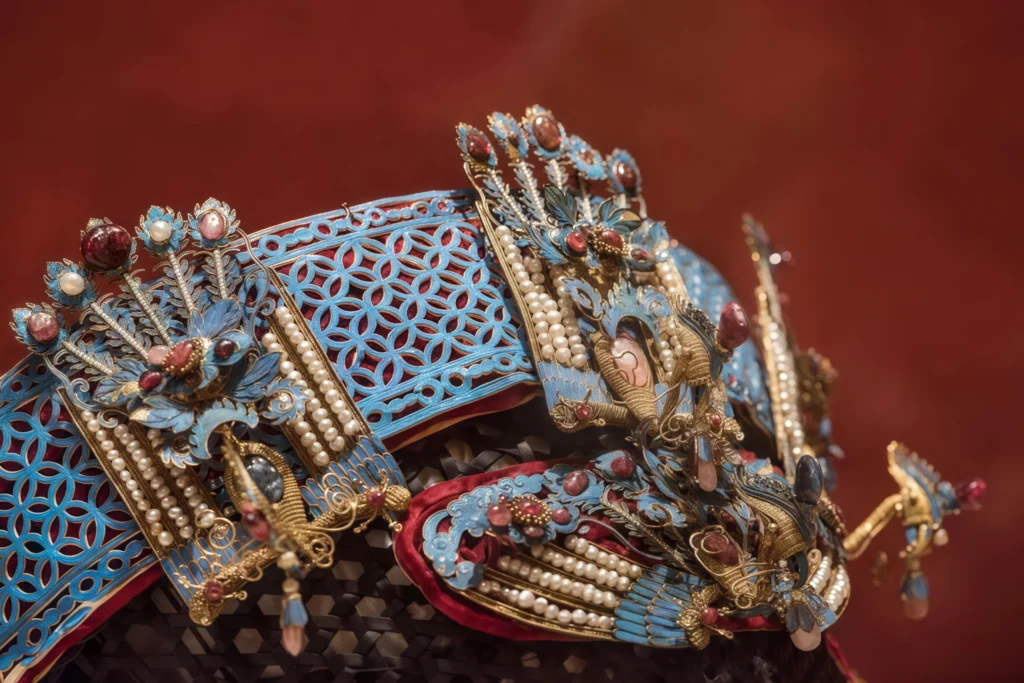
Meaning: As headpieces, dianzi beautify buns and carry symbolic phrases in their designs, expressing heartfelt wishes and emotions.
Comb and Grate (Shubi)
Intro: The shubi (comb and grate), also called zhi (comb), is a hair-grooming tool and one of China’s eight iconic hair accessories, doubling as a traditional craft. Sparse-toothed ones are “combs” for styling, while dense-toothed “grates” clean hair gunk. Made from bone, wood, bamboo, horn, or ivory, shubi were must-haves, especially for women, who kept them close, sparking a trend of wearing combs as decor. Ancient China took shubi seriously, with Song dynasty styles carrying into the Qing, where ornate designs thrived.
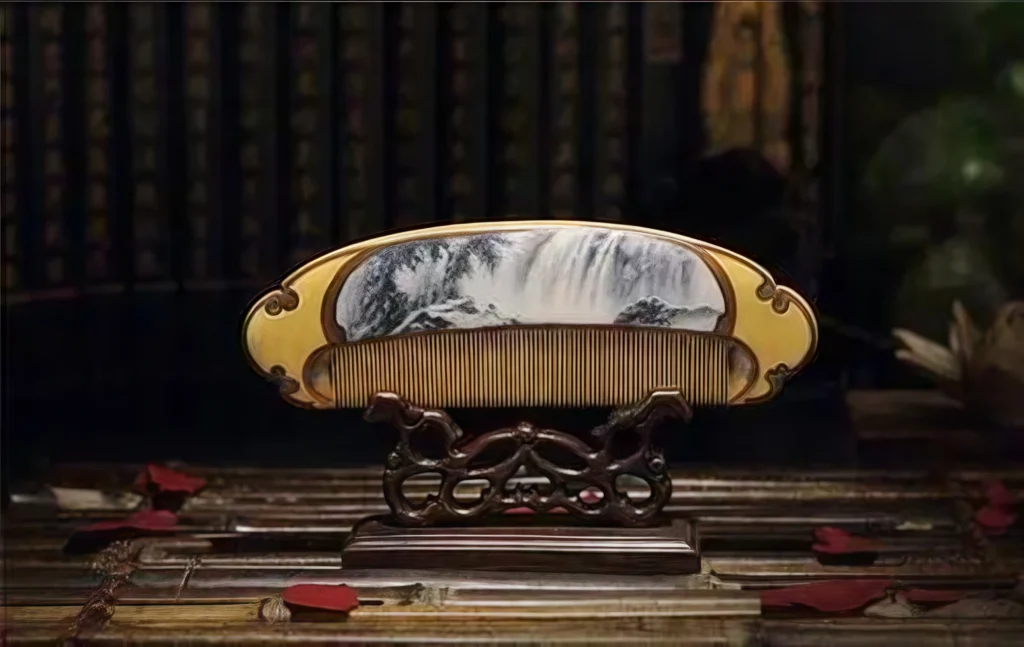
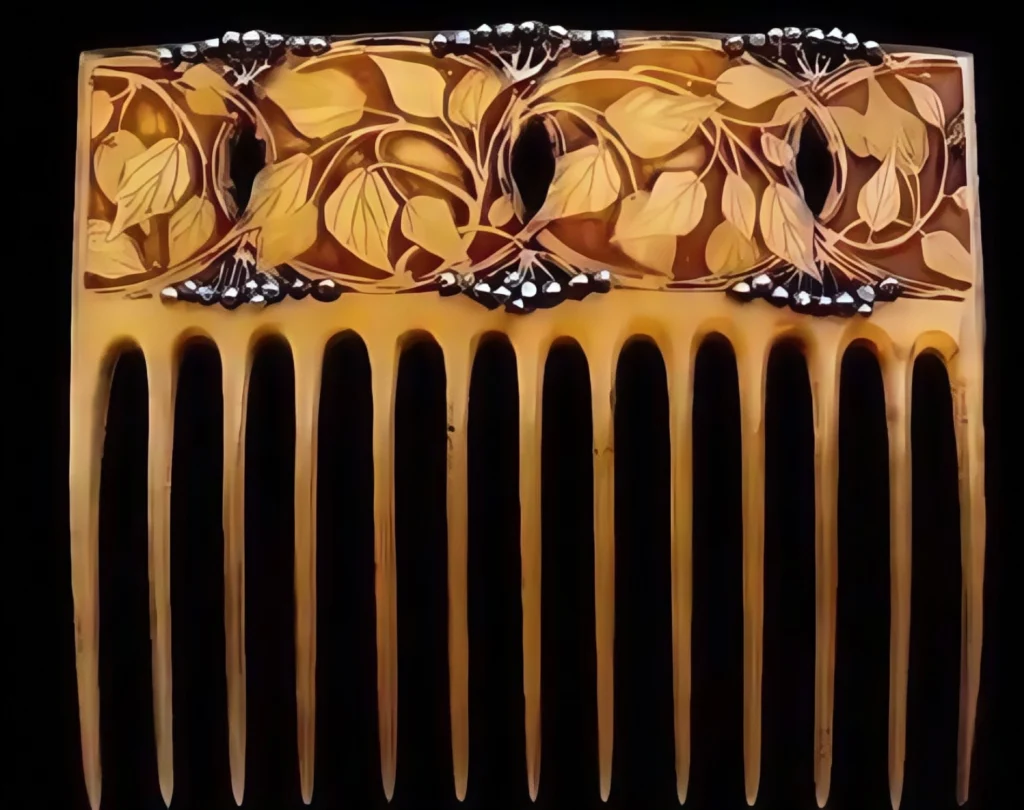
Flat Hairpin (Bianfang)
Intro: The bianfang (flat hairpin) is a wide, flat, one-shaped pin used by Manchu women to style their “flag head” updos, especially the Qing dynasty’s “big winged” look, some stretching a foot long! Palace bianfang in jade shimmered green or were inlaid with gold, silver, red coral, tourmaline, turquoise, or sapphires, featuring lucky patterns like longevity characters, flowers, or bats.
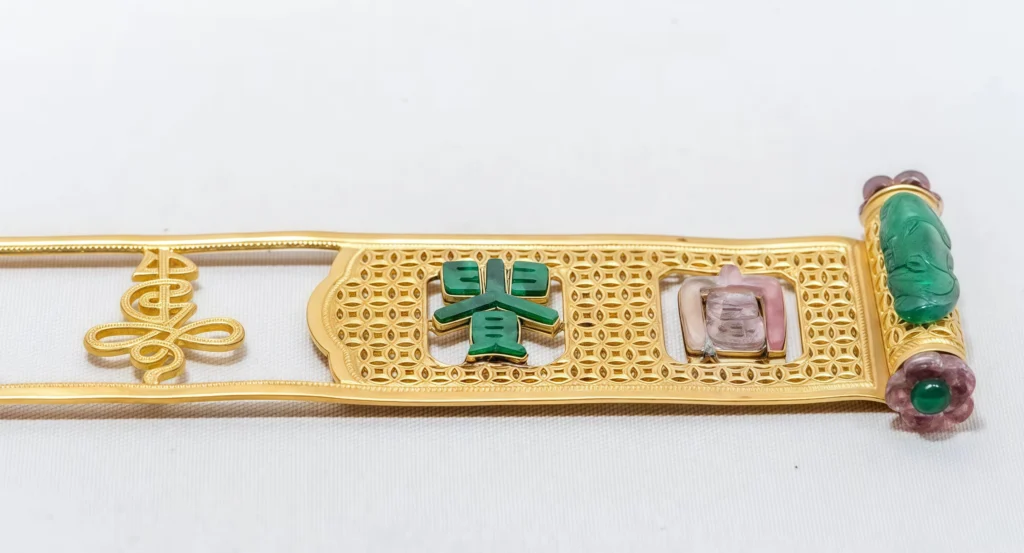
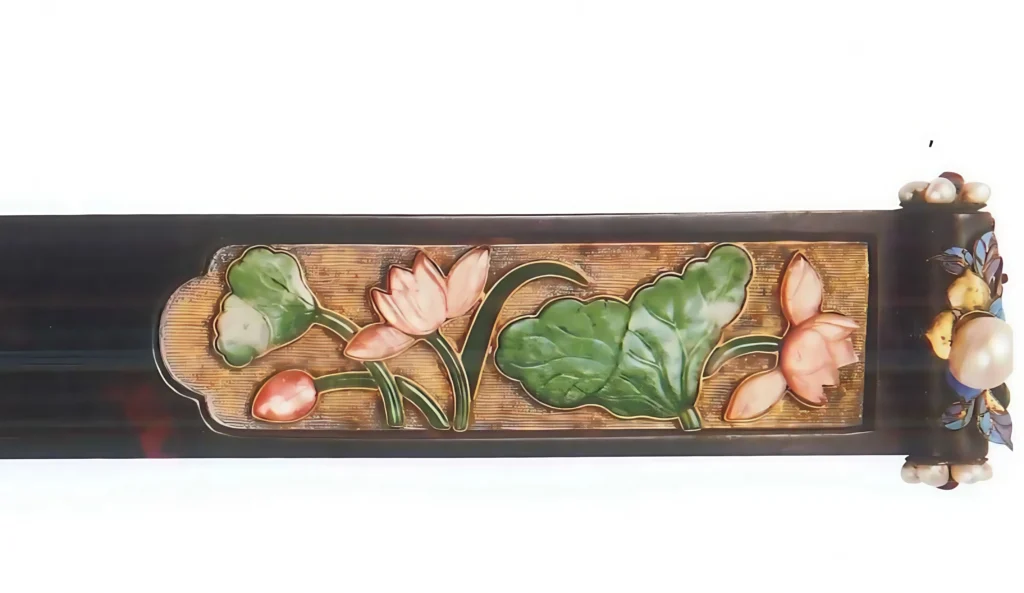
Hair Crown (Faguan)
Hair crowns (faguan) were ancient status symbols, with materials and designs signaling social rank. Nobles and royals wore faguan studded with gems and pearls to flaunt prestige.
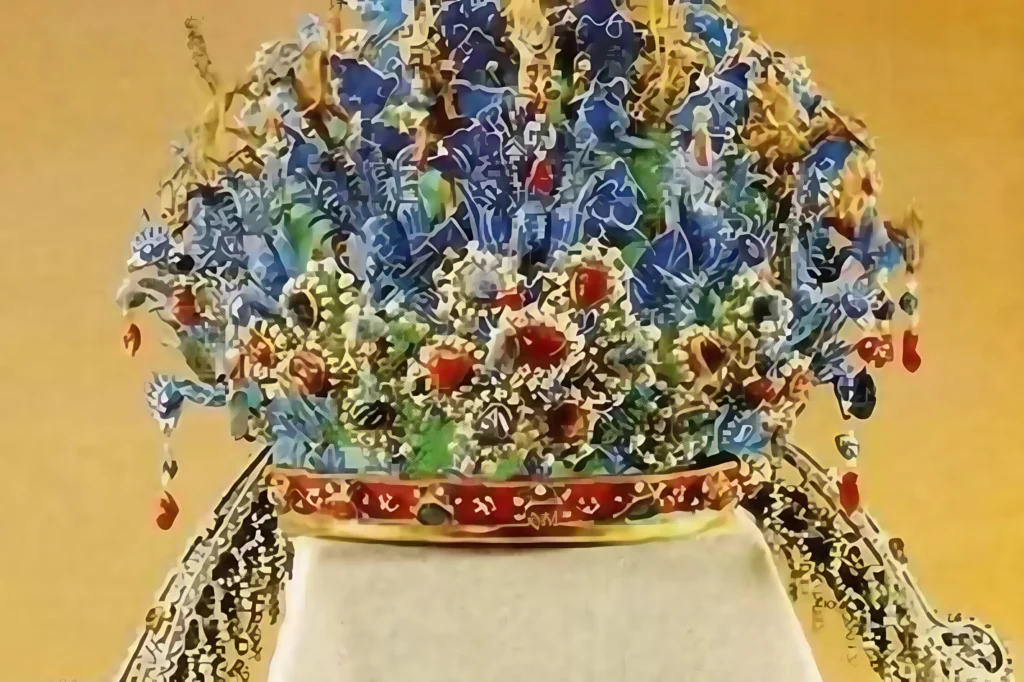
Styles varied by era and region, including zicuo, fujin, jiejin, lunjin, Dongpo jin, rujin, xiaoyao jin, chunyang jin (Lotte towel), wangjin, zheshang jin (winged crown), mao and futou (hats), flat futou, knotted futou, soft-footed futou, round-top straight-footed futou, square-top hard-shell futou, black gauze hats, wide-brimmed hats, and veiled hats.
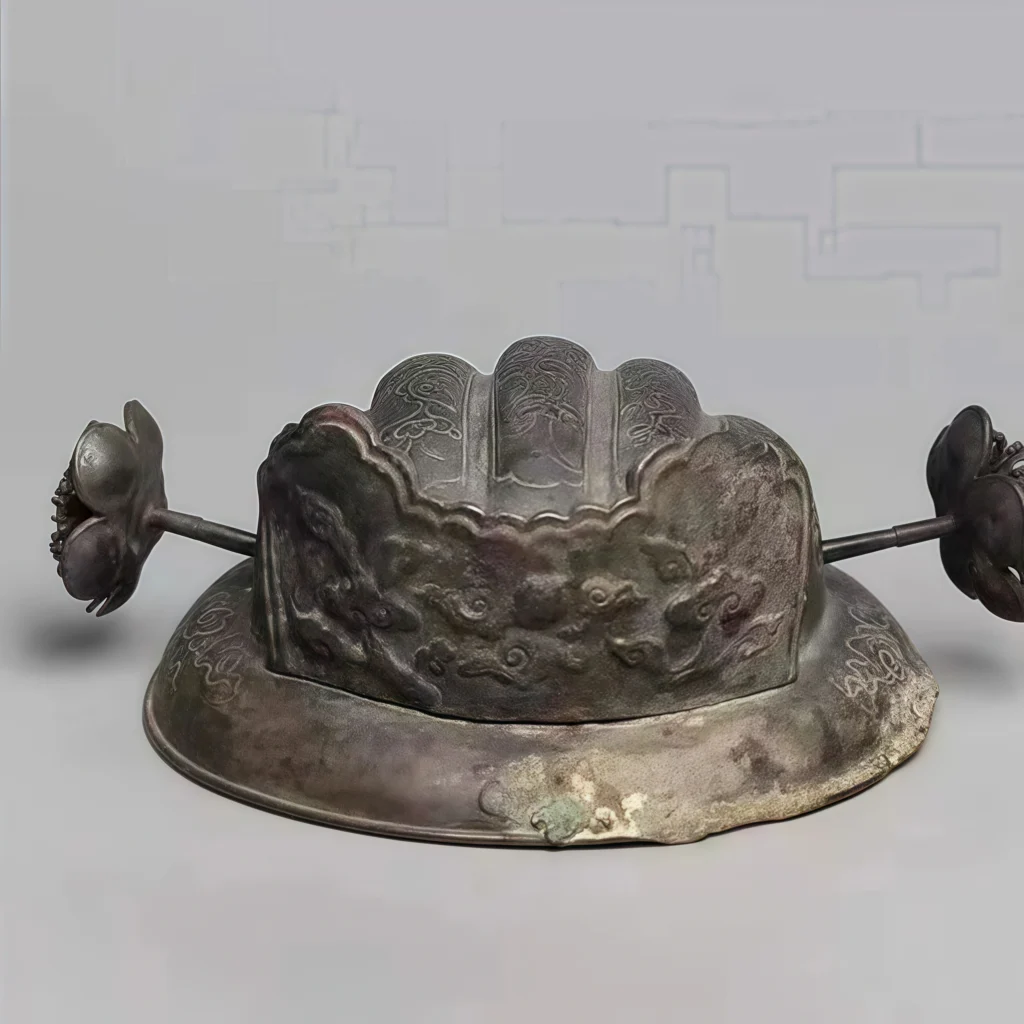
Modern Vibe: Today, faguan remain beloved as cultural heirlooms. Hanfu fans pair them with traditional outfits (like your Ming mamian qun!) to honor heritage. Designers blend faguan elements into modern looks, mixing classic charm with fresh style.

Pearl Flower (Zhuhua)
The zhuhua (pearl flower) traces back to the Southern Dynasties, as noted in poet Jiang Hong’s Ode to a Singing Girl: “Jeweled clips with pearl flowers, brightening her makeup.” Cultural exchanges boosted craftsmanship, making shiny, rounded zhuhua a women’s favorite. In the Northern Song, palace ladies loved pearl zhuhua, but scarcity and Buddhist influence later shifted trends to gem-studded pieces. By the Qing, lively markets made zhuhua a hit across classes, with intricate, refined designs.

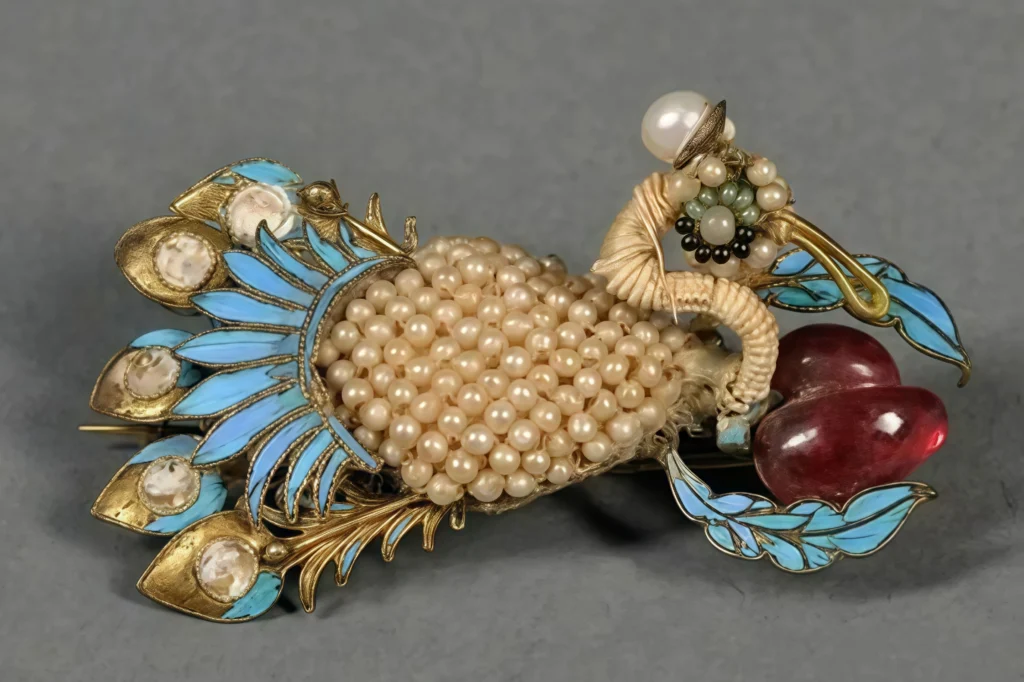
Forehead Band (Mo’e)
The mo’e (forehead band), also called headband, hair hoop, or brow tie, is a strip of fabric or brocade wrapped around the forehead, often embroidered or jeweled. A key women’s accessory, mo’e dates to the Shang and Zhou dynasties, with the term coined in the Tang and peaking in the Ming and Qing. They come in diverse shapes, with vibrant patterns and crafts.
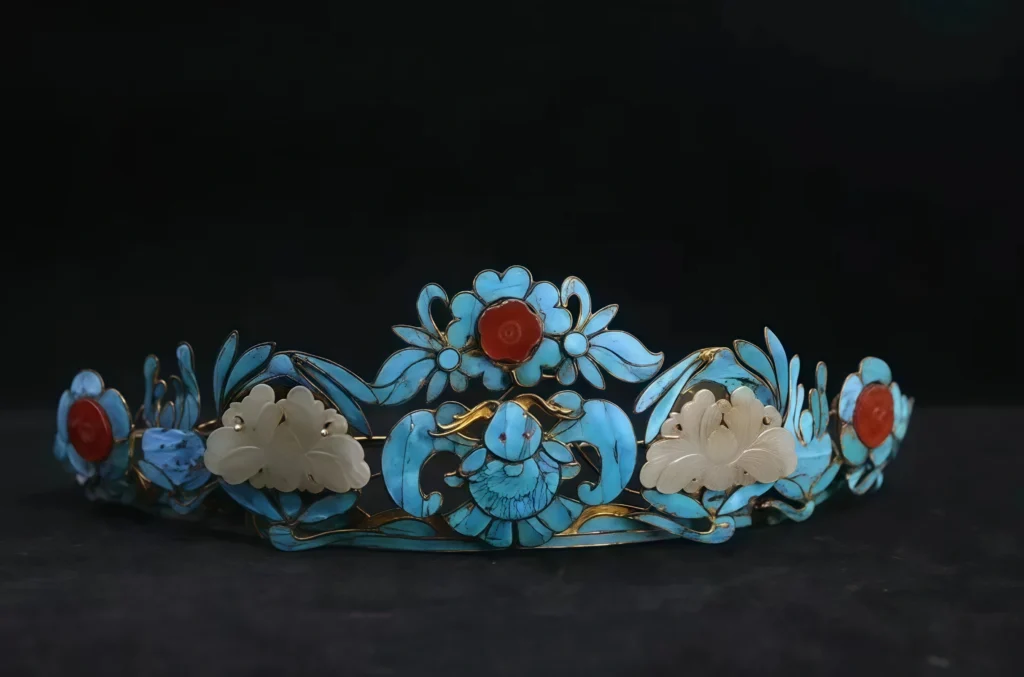
Materials: Mo’e splits into fabric (cotton, gauze, brocade, satin) and non-fabric types. Cotton is soft, matte, and non-stretchy; silk is smooth, glossy, and drapes well, with satin being a Ming-Qing royal favorite. Common embroidery includes flowers, butterflies, fish, lotuses, animals, or lucky motifs like orchids, chrysanthemums, twin branches, paired birds, magpies, or phoenixes with peonies.
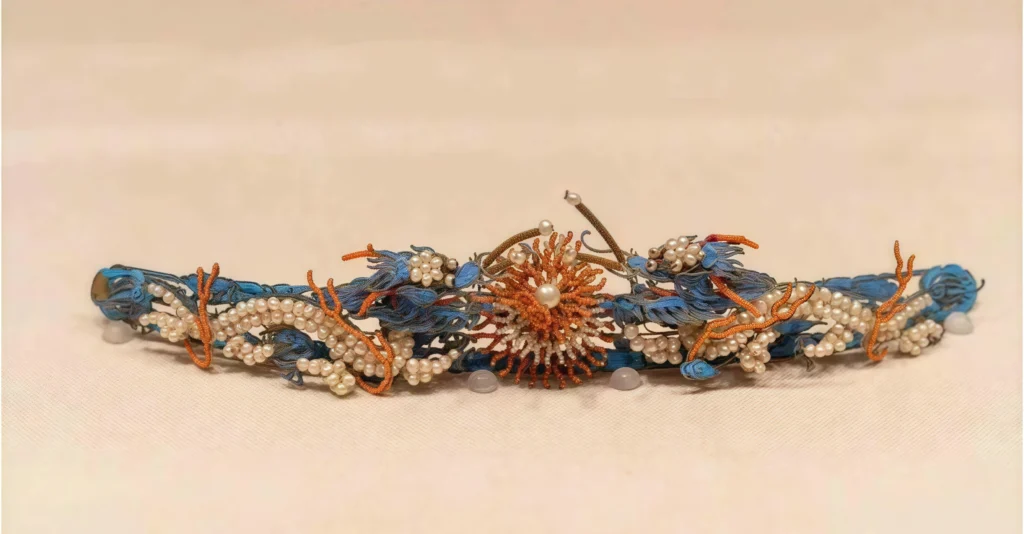
Floral Hair Ornament(Huasheng)
The huasheng (floral hair ornament) is a flower-shaped headpiece worn by Han Chinese women, typically styled as blossoms and tucked into updos or pinned to the forehead. Its signature trait? Flowers galore! Many huasheng have neat circular or fan-shaped outlines, with the inner part carved or inlaid into lush floral clusters—a total vibe for your red hanfu look!
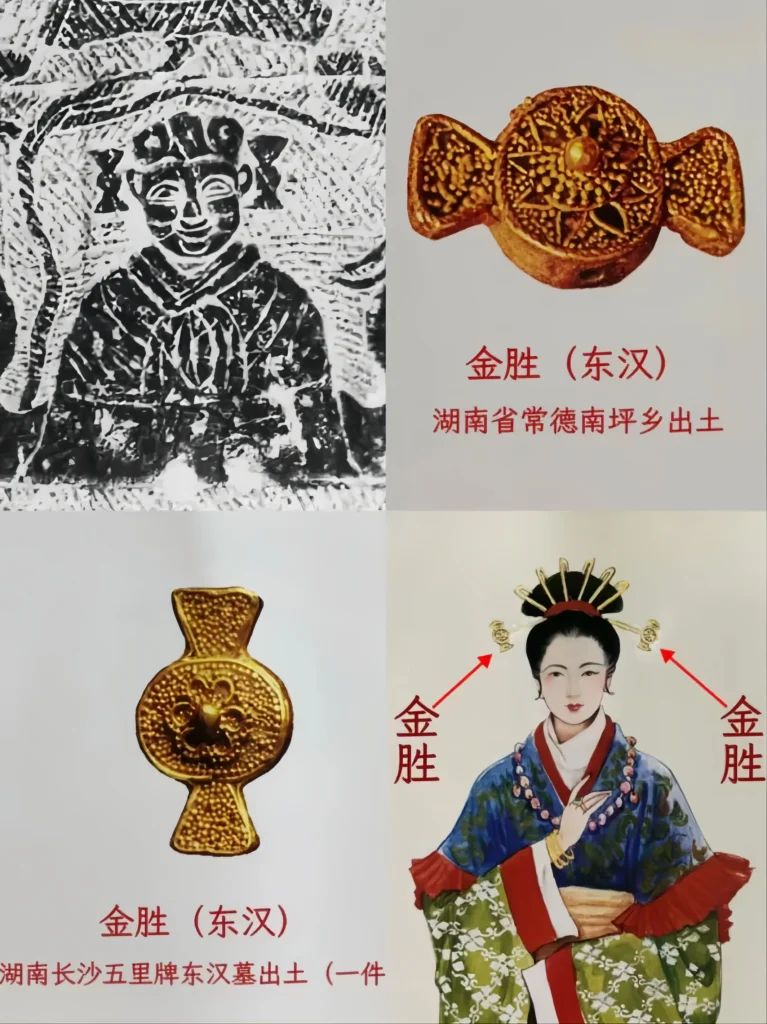
Materials and Style: In the Han dynasty, huasheng were crafted from gold, silver, or jade. They could be chai (hair forks) or zan (hairpins). So, how do you spot a huasheng among other headpieces? Easy—focus on one key feature: if it’s a floral ornament tucked into an updo or pinned to the forehead, it’s a huasheng.
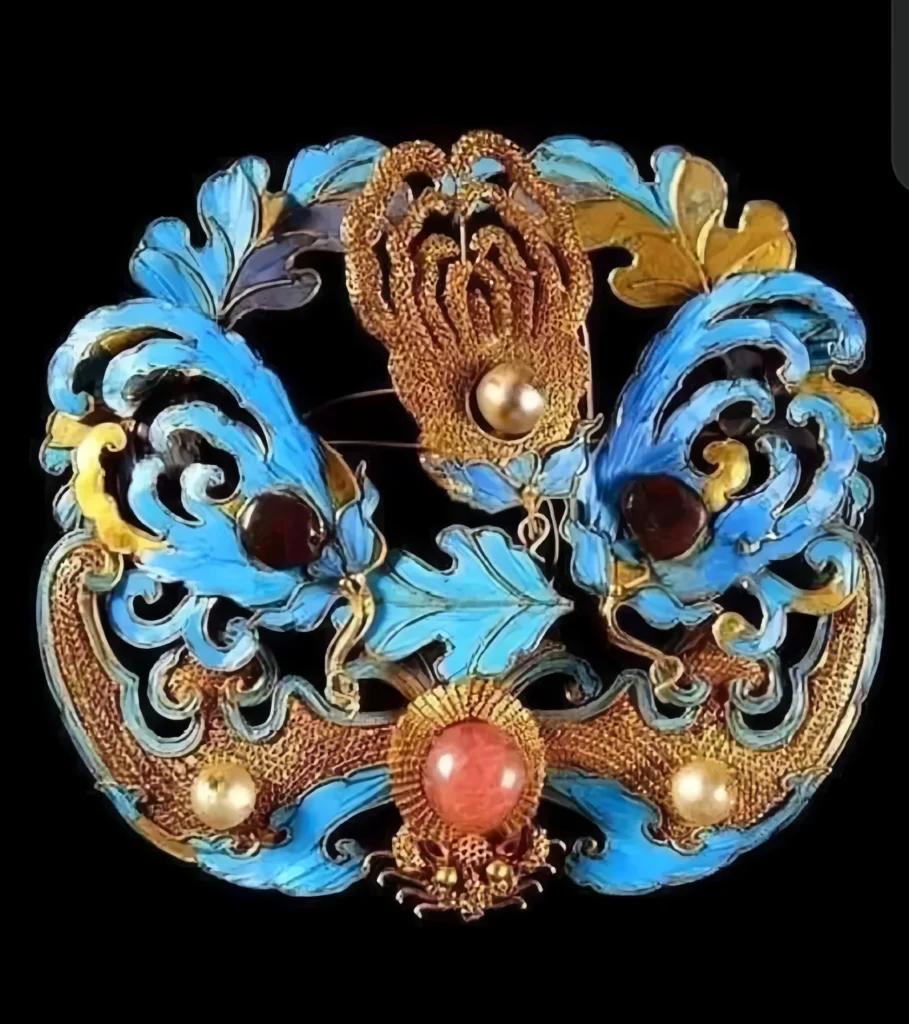
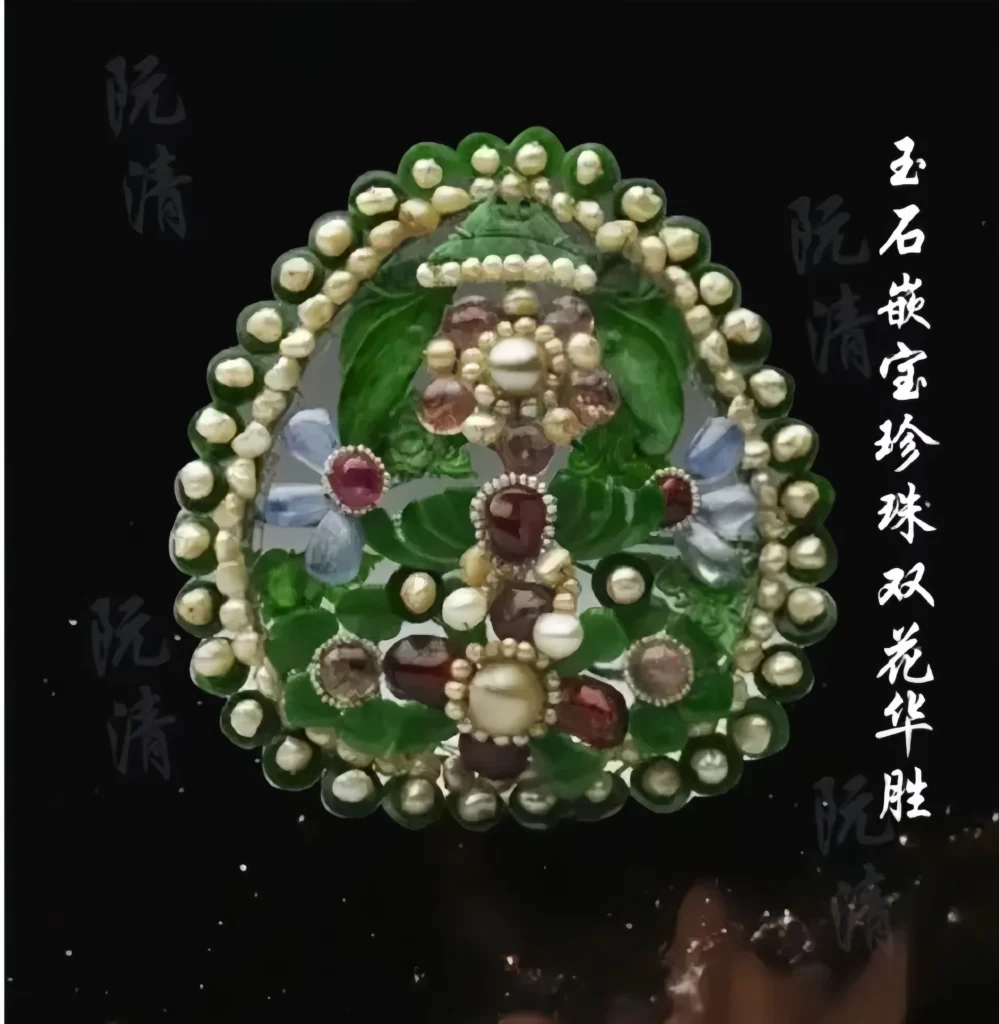
Cultural Meaning: The character “sheng” in huasheng refers to women’s ornaments. In Journey to the West, the Queen Mother is described wearing a huasheng with tiger pendants, flanked by fairy maids and feathered youths, her jeweled canopy glowing. This shows ancient women wore huasheng to frame their faces, aiming for a poised, elegant look that’s still stunningly beautiful—hence the forehead-pinning style.
Silk Flower(Juanhua)
The juanhua (silk flower), also called “Beijing flower,” is a traditional tie-dye craft from Beijing, originating in the flower markets outside Chongwen Gate. During the Qing dynasty’s Kangxi-Qianlong heyday, this area buzzed with flower workshops, where families crafted and sold juanhua, forming a full-blown flower-making hub. Known as the “Flower Market,” the name sticks today.
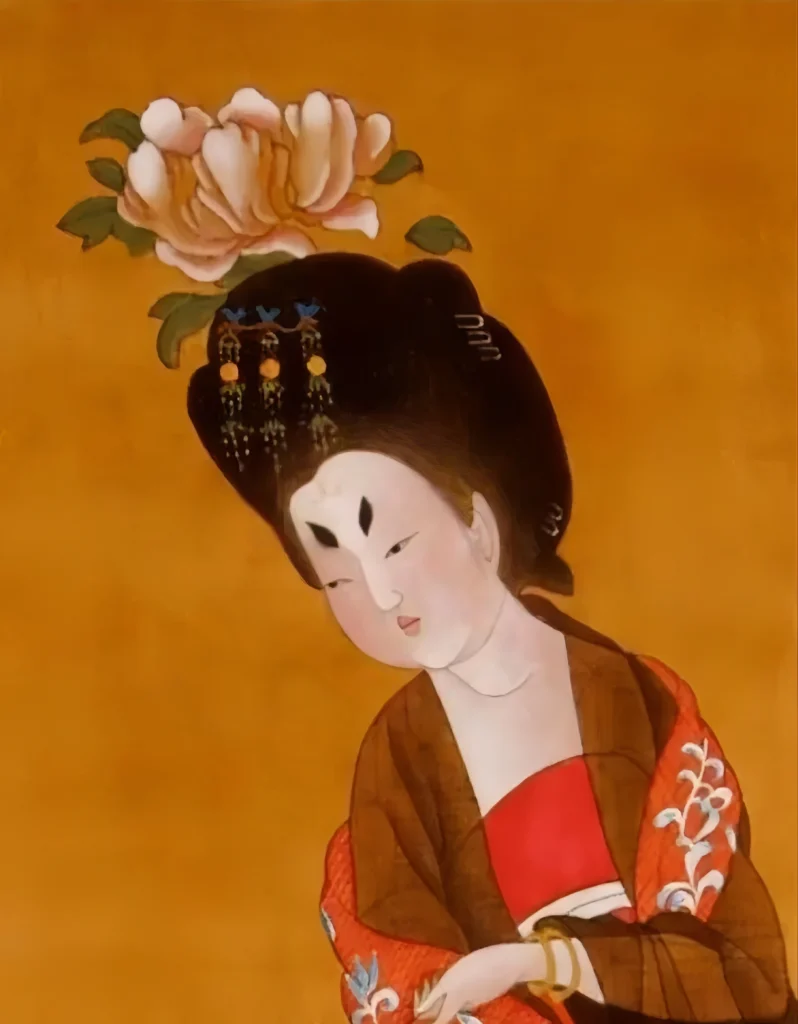
Legend says Tang dynasty’s Empress Yang Guifei had a scar on her temple. To hide it, her maids picked fresh flowers daily for her hair. In winter, when flowers faded, they crafted fake ones from silk and gauze as substitutes. These “headpiece flowers” spread to the masses, becoming a trendy craft and evolving into the unique juanhua—perfect for adding flair to your Tang-inspired ruqun!
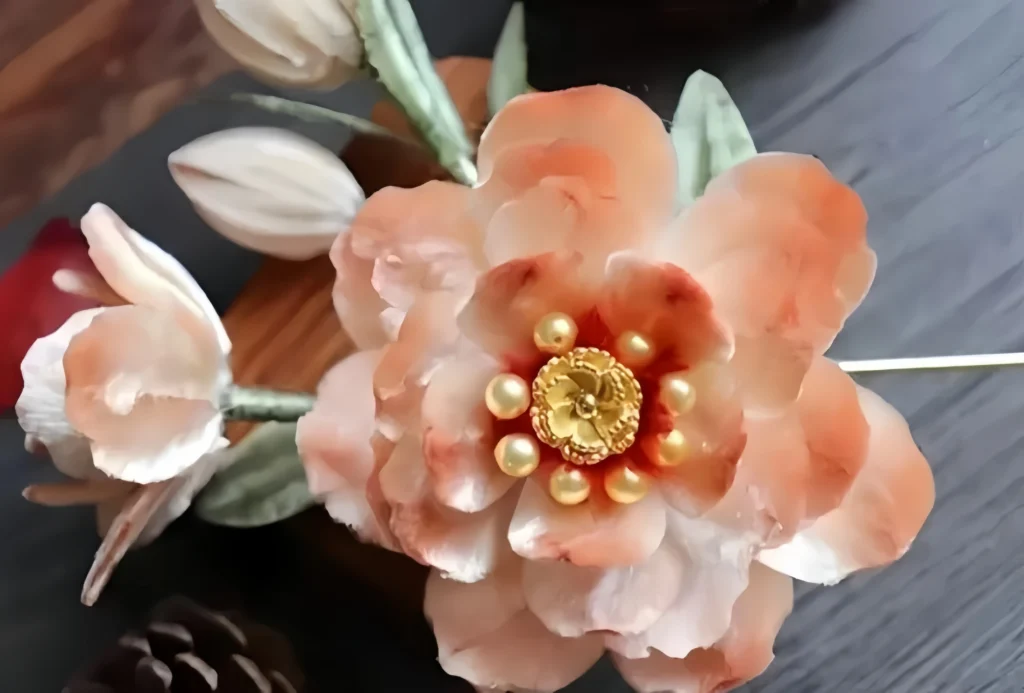
Hairnet Crown(Zhouji)
In the Ming dynasty, married women were required to wear a zhouji (hairnet crown), a net-like cap woven from hair, silver, or gold threads. It was a must for wedded women, used with a crown or net to wrap their hair neatly.
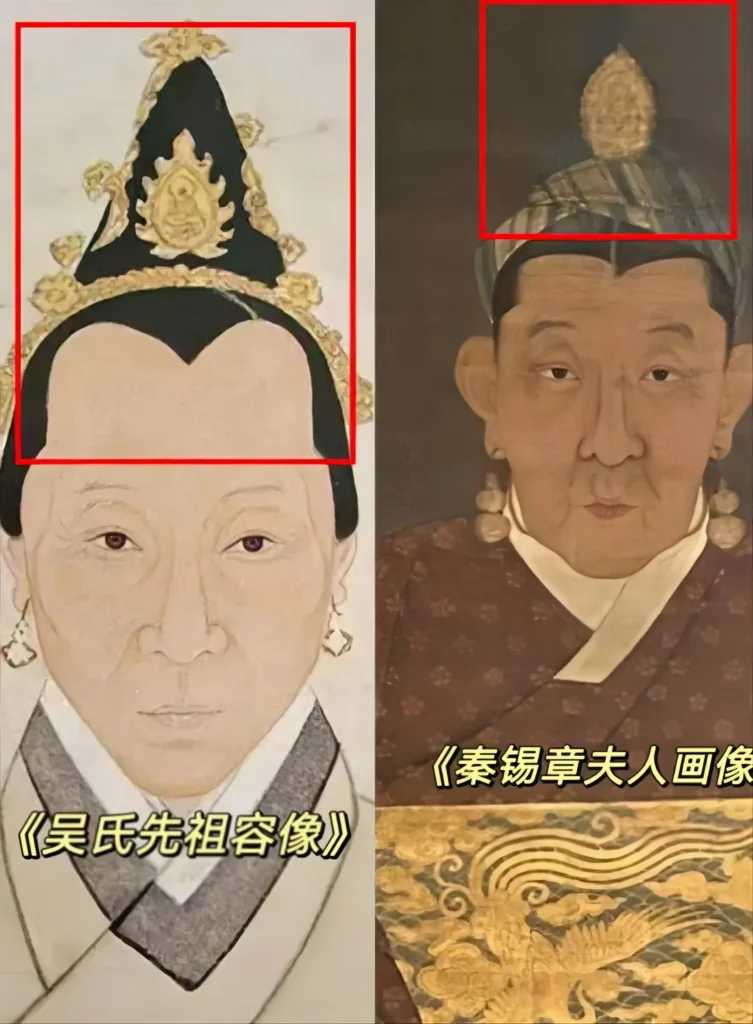
Typically made from gold, silver, horsehair, or bamboo silk, zhouji were covered with dark gauze and worn over updos. Paired with various ornaments, called “headpieces” in Ming times, they’re a chic match for your mamian qun—channeling that regal Ming vibe!

How to Style Hanfu Hair Accessories
To wear hanfu hair accessories, start with a clean updo—buns or twists work best. Secure with a fazan hairpin or fachai hair fork, then add a buyao ornament or zhuhua pearl flower for flair. For a bold statement, incorporate a mo’e forehead band. Mix and match based on your hanfu’s era and style, ensuring balance between accessories and outfit. For inspiration, explore Hanfu Fashion.

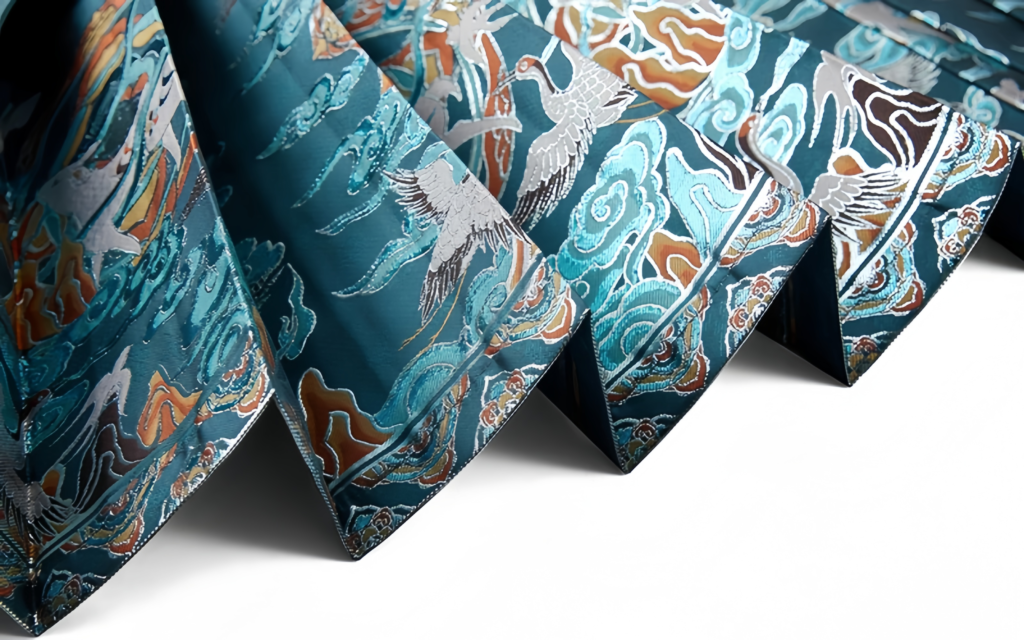
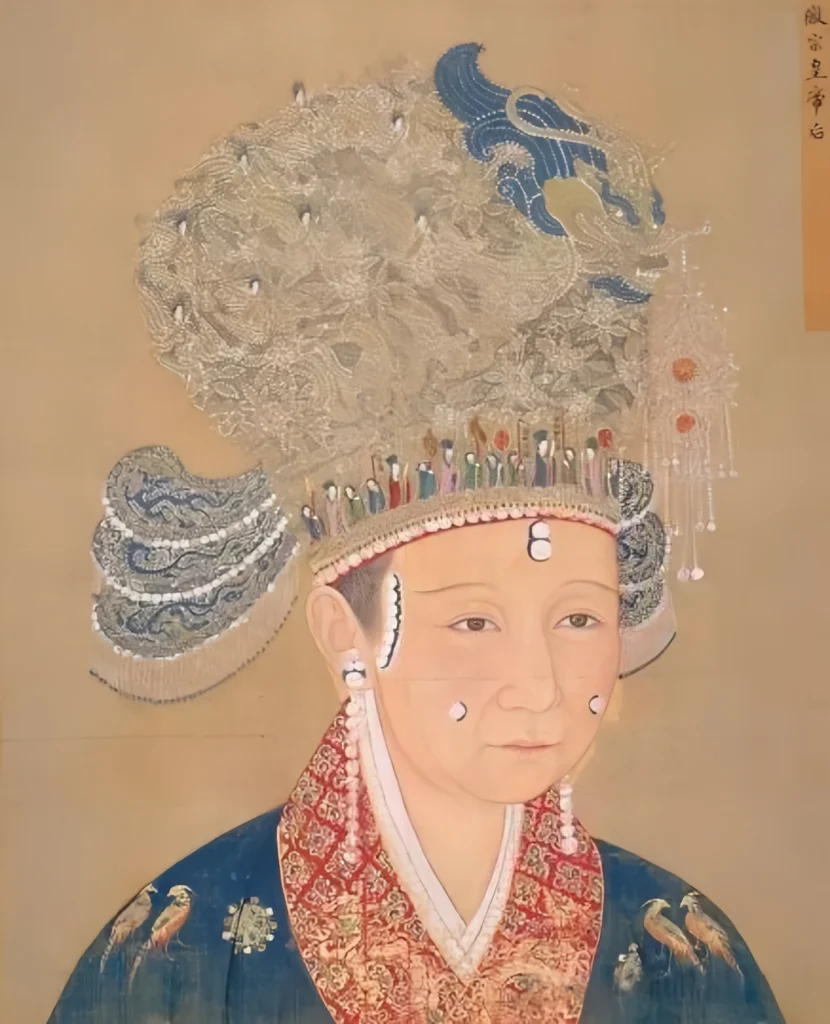


Hi, I think your blog might be having browser compatibility issues. When I look at your blog site in Firefox, it looks fine but when opening in Internet Explorer, it has some overlapping. I just wanted to give you a quick heads up! Other then that, amazing blog!